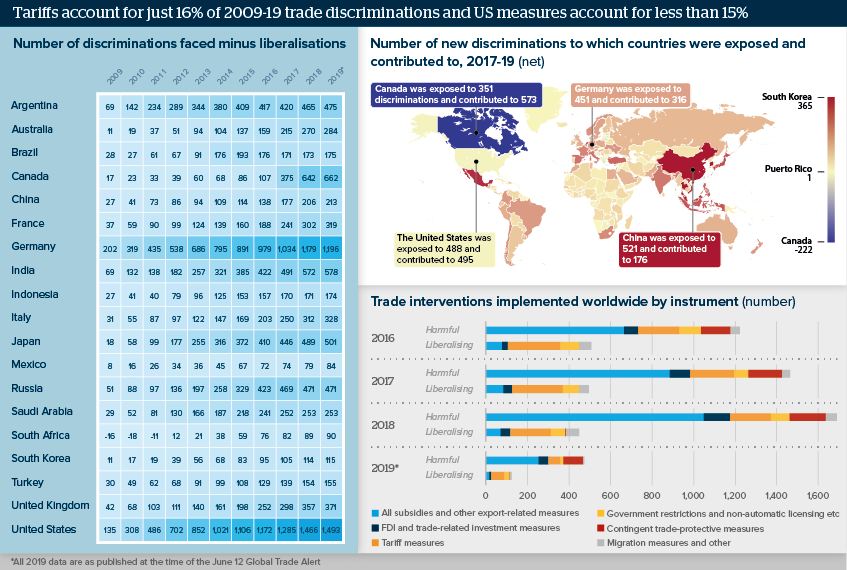Non-US, non-tariff protectionism is rising rapidly
Fears abound about US-China tariffs, but rising non-US, non-tariff trade nationalism poses a larger threat to world GDP
Source: The Global Trade Alert, June 2019 and Oxford Analytica calculations
Outlook
The tariffs imposed by the US administration are the most obvious and most talked about driver of rising protectionism. To focus on this alone is misleading: before Donald Trump’s election as president, the number of G20 trade discriminations rose eightfold from 2009 to 2016. Moreover, the United States has contributed fewer of the post-2017 measures, 13.3% compared with 15.0% over 2009-16. Furthermore, tariffs account for just 12.0% of the post-2017 discriminations, down from 17.3% over 2009-16.
As the largest importer and lead architect of the rules-based post-War trade order, US policy carries outsized influence, but the evidence raises concern that the US tariffs will mask and divert much-needed policy attention from the underlying trend.
Impacts
- Use of subsidies and export-related rules will rise -- they made up less than 50% of 2009-12 discriminations, but more than 60% from 2017.
- Liberalising services trade could add hundreds of billions of dollars to long-run world GDP but requires a change of global direction.
- The rest of the G20 has not followed the US shift away from cooperating on climate change and other areas, but fears about this will rise.
- WTO reform is realistic in key sectors, but more US tariffs may come sooner than that.
See also
- Nationalism shapes much of global trade policy - Dec 23, 2019
- Prospects for global trade in 2020-24 - Dec 5, 2019
- Prospects for the global economy in 2020 - Nov 29, 2019
- Digitalisation will drive cross-border services trade - Oct 15, 2019
- Waning monetary policy effectiveness will fire debate - Aug 2, 2019
- Prospects for the global economy to end-2019 - Jun 28, 2019
- More graphic analysis
